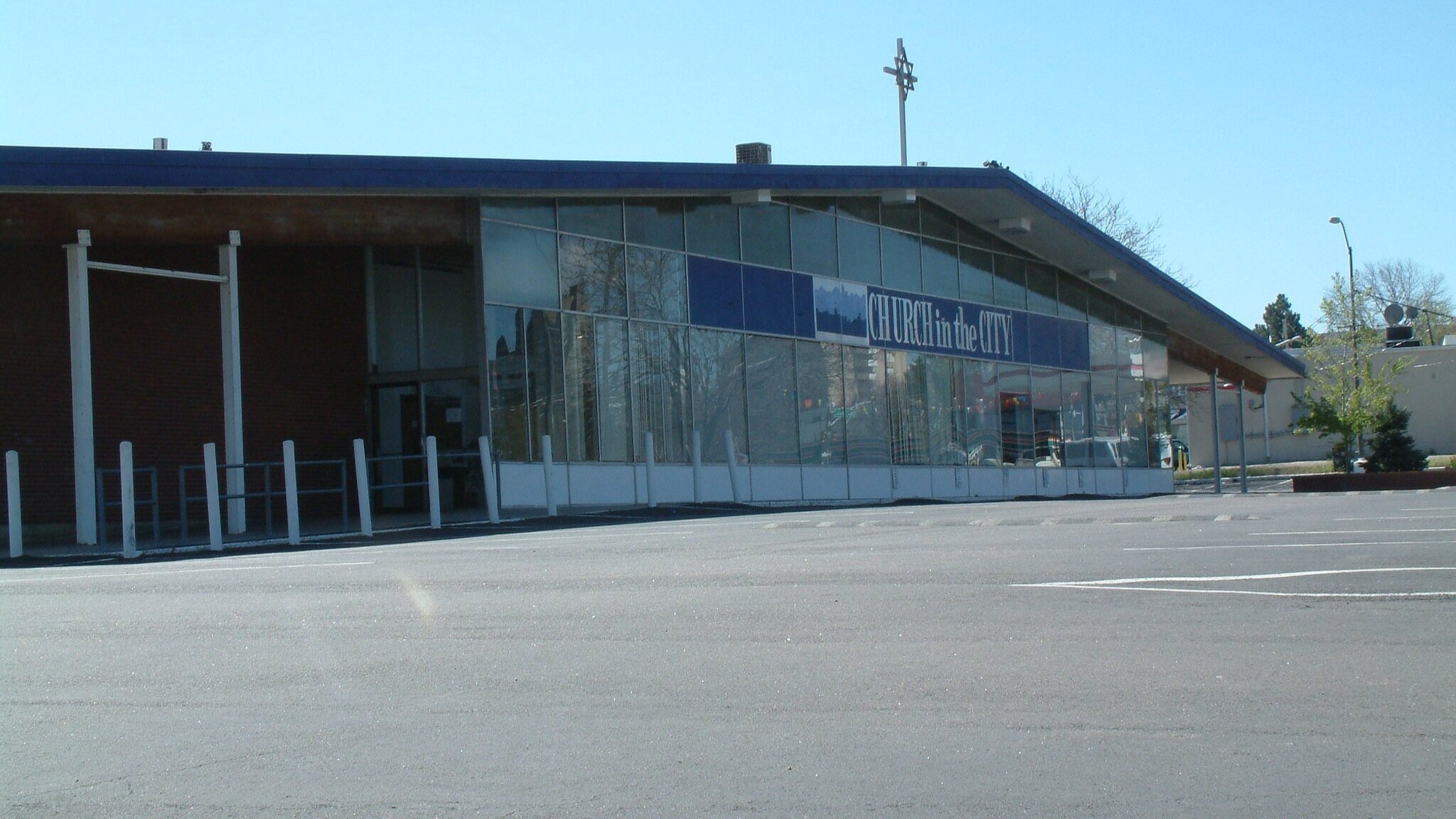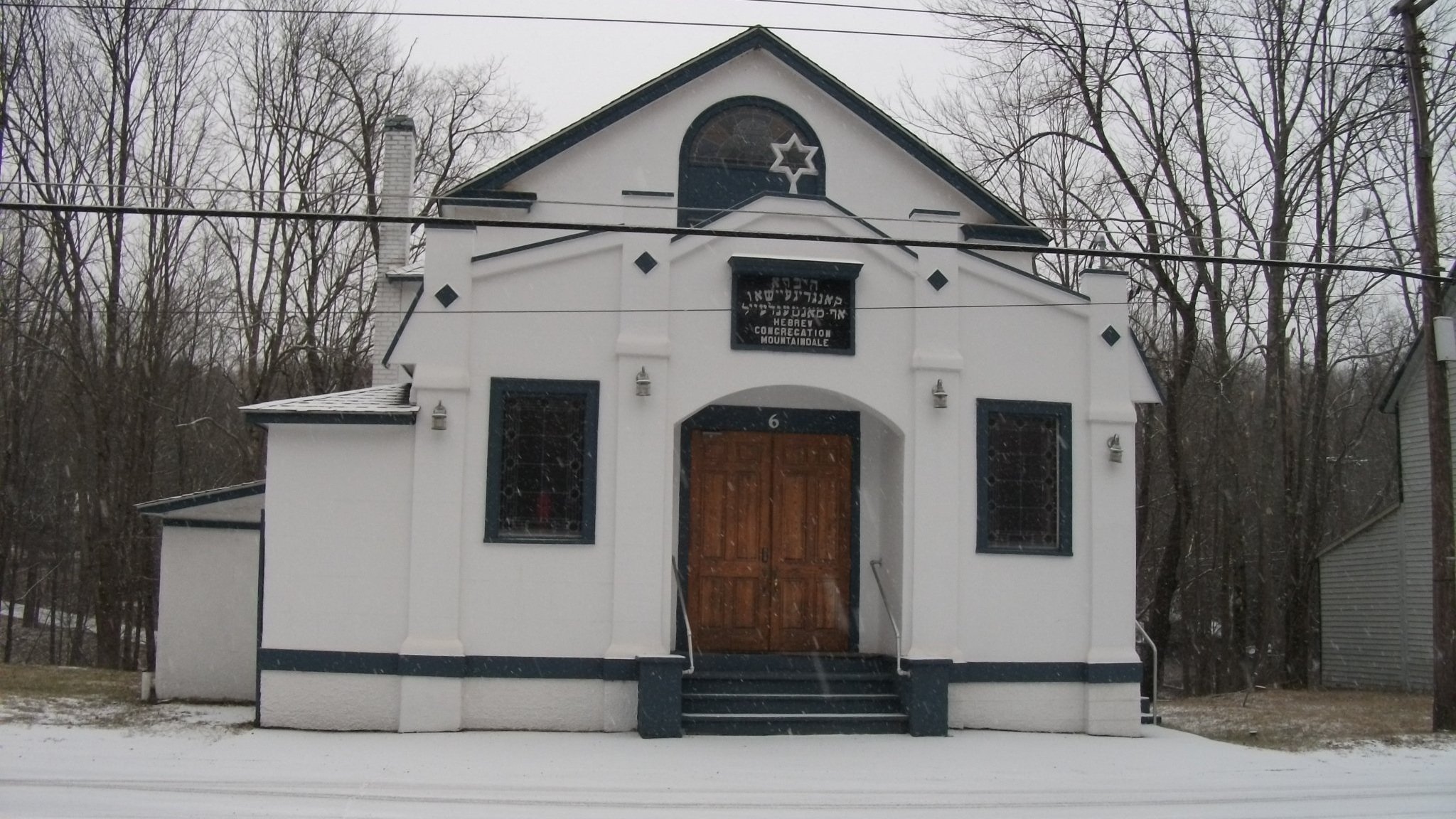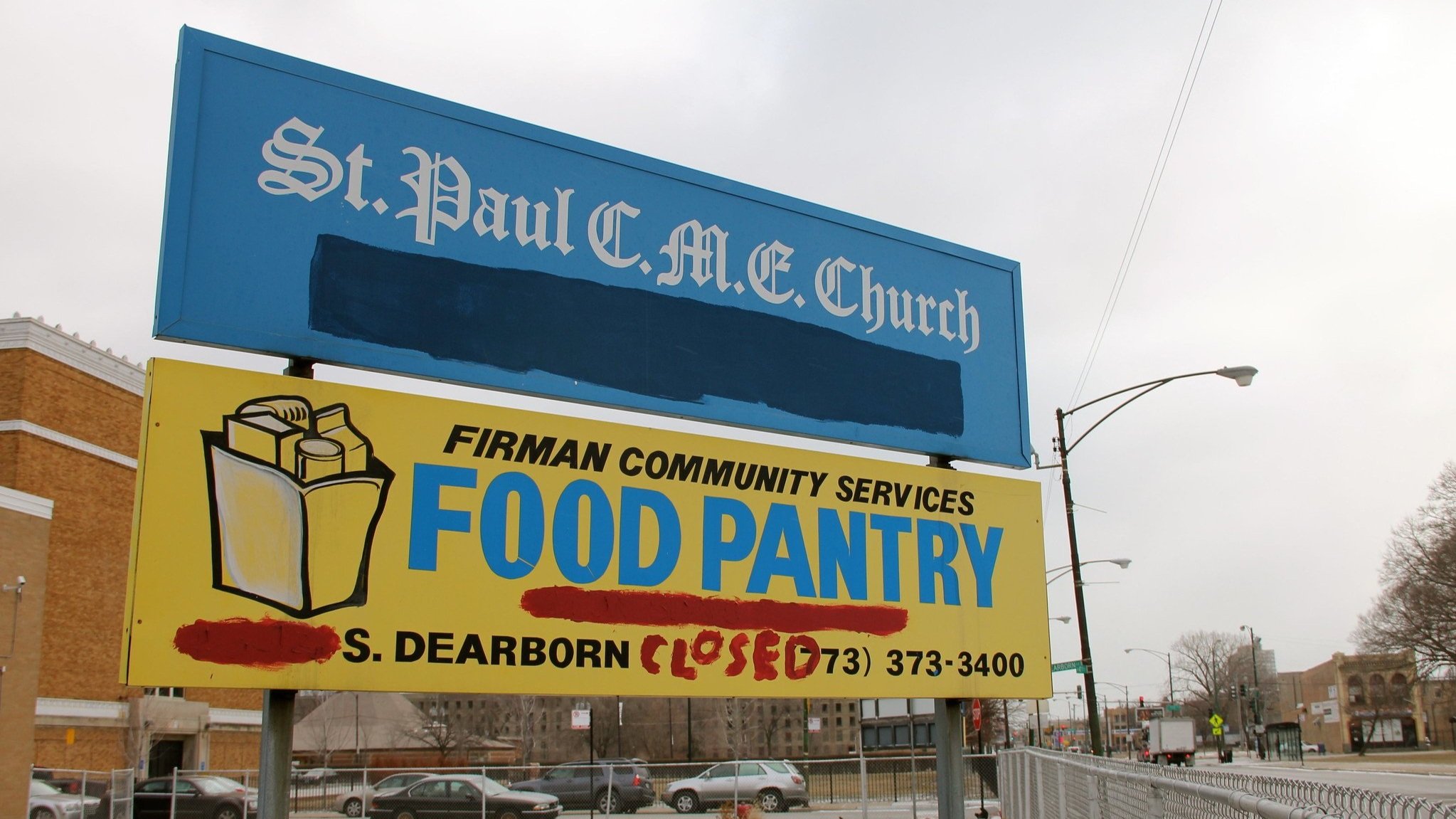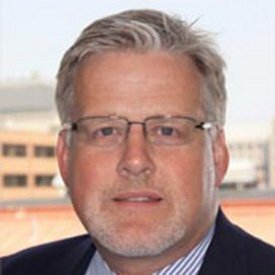The Promise of "House of Worship Districts"
This piece is part of our ongoing conversation about the role that faith communities can play in building strong towns. The writers of this piece offer one possible approach to how underused houses of worship can come together and contribute to strengthening their communities.
(Source: Flickr.)
More and more cities are confronted with large, underused, or vacant houses of worship clustered in center cities or neighborhoods.
In cities with low real-estate demand, struggling houses of worship present a problem. No one wants problematic properties dominating their urban landscape.
In cities with high real-estate demand, the properties offer opportunities. When there is a market, developers relish repurposing properties like houses of worship into market-based uses. Municipalities like adding them to the tax rolls. Still, even such “successful” redevelopment projects can be problematic, as they can result in foregone opportunities to provide community facilities, arts centers, or low-income or affordable housing to neighborhoods desperately in need.
Like universities, hospitals, and museums, houses of worship can be anchor institutions, defined by Harvard economist Michael Porter as “large institutions, typically educational, medical or cultural, that are deeply rooted in their local geographies, and play an integral role in the local economy.” The importance to the community of some houses of worship has faded over time. Collectively, however, their presence—and the presence of their real estate—can continue to have an integral role, albeit perhaps in different form than in decades and centuries past.
To achieve the best communities possible, universities, hospitals, and arts institutions in many cities have coalesced in districts to identify areas around anchor institutions as assets, and to form district organizations to guide them to full potential. Some district organizations include:
Medical-campus district organizations, e.g., Houston’s Texas Medical Center, Cleveland Clinic, Buffalo Niagara Medical Campus.
University-area district organizations, e.g., Philadelphia’s University City District, Maryland’s College Park-City University Partnership, Syracuse’s University Hill Corp.
Museum and arts district organizations, e.g., Dallas Arts District, Houston Museum District, St. Louis’s Zoo Museum District.
The work program of each district organization is tailored to the area and evolves, maturing as the area matures, usually according to not only a physical plan but also a strategic plan. Normally the district organization has a broad mandate to improve the area according to the “triple bottom line” of profit (economy), people (equity), and planet (environment).
Houses of worship, in some cities, have formed interfaith coalitions. They can play a valuable role in the life of a city. However, they usually focus on issues of social justice—feeding programs, homeless services, social advocacy—not, as medical, university, or museum district organizations do, on issues of economics and place. Organizing a place-based district ups the ante of an interfaith coalition, and includes neighboring property owners, tenants, and residents in the district organization.
Let’s call these districts “House of Worship (HOW) Districts.”
New Life for Underused Houses of Worship
As church membership in particular declines across America, mobility of worshipers improves, real-estate expenses increase, and the COVID-19 pandemic dampens in-person attendance and contributions (and generates new forms of congregational worship), underused and empty houses of worship are becoming more commonplace.
The usual means of dealing with struggling houses of worship is one at a time and over an extended period. A house of worship enters a downward spiral: attendee numbers dwindle, contributions decline, reserves erode, the building deteriorates, staff cannot be afforded, the house of worship becomes less attractive to attend. Congregations find themselves spending half or more of their budgets on real estate, leaving few resources for much else. It is common to hear congregational trustees say that they are “one new roof (or boiler or steeple repair) away from closing.” By the time a house of worship closes, it often features a deteriorated building, empty coffers, and a small (and demoralized) congregation. It is not unusual that a realtor—sometimes one unfamiliar with religious buildings—is retained, who sells the property to the highest bidder, if at all.
Meanwhile, houses of worship often serve as the locus of critical social services within the community. Food pantries and feeding programs, clothing closets, health clinics, child-care centers, and self-help programs often find affordable space with a faith community, which considers its support a critical part of its mission. A closing church often causes a community to launch an urgent search for new space for these critical human services. Partners for Sacred Places, a Philadelphia-based not-for-profit organization, has identified a “halo effect,” a subsidy the average congregation provides to human-services programs it houses in its building. The findings: The average subsidy for programs housed in sacred places—including the value of the space itself, the time of volunteers, and in-kind support—was almost $150,000 per congregation per year. This research, bolstered by Cardus’ Halo Project research in Toronto, indicates that “every dollar a congregation spends could create $4.77 worth of services a city does not have to provide.”
In a community area with several houses of worship—some ailing, some healthy—focusing on only one building at a time can produce less than optimal results. A better way is to think of the area as a district, with a common mission, goals, and objective. Certainly, individual properties need to be analyzed, but a better approach, for both the individual houses of worship and the community, is to look at the properties and neighboring properties in context. The whole can be greater than the sum of its parts.
Rabbi Zalman Kastel, Sheikh Wesam Charkawi, Fr. Patrick McInerney. (Source: Mohamed Taha / @Mo_Taha1.)
What Is a HOW District?
A HOW District is an area in which multiple houses of worship collaborate with each other, adjacent property owners and tenants, and municipalities toward a shared vision of community benefit. It will produce a valuable collection of assets that exceeds anything that any one asset alone could produce.
The concept may work best when the houses of worship are proximate or in a corridor (not unusual in cities built in the 19th and early 20th centuries), but could be stretched to work citywide.
We recommend a HOW District adopt these basic principles:
Respect the faiths and histories of the various houses of worship and challenge them to commit to work with each other and other property owners and tenants, to benefit the entire district and community.
Embrace a vision and design for the district developed by the houses of worship and other district stakeholders that embrace the “triple bottom line” of profit (economy), people (equity), and planet (environment), and the principles of smart growth.
Practice collaborative, locally based decision-making
Recognize that the district is part of a larger community.
Understand that the district is to be improved for succeeding generations, whose needs and wishes may be different from the current generation of influence.
Educate public officials and the public at large about the value of the district to the city and region.
(Source: Flickr.)
What a HOW District Can Do for a City
While a HOW District can carry on most of the functions of an interfaith coalition, it also challenges houses of worship to be open to new and innovative uses of their real estate. Among the possibilities a district can lead or coordinate:
Repurposing or redeveloping an underused portion of property into mixed use.
Sharing sanctuary, office, production, or community space with other houses of worship or community stakeholders.
Repurposing properties into human-services hubs, community centers, and arts centers.
Repurposing properties into housing, especially low-income, affordable, and workforce.
Repurposing properties into retail, office, and other market-based uses. Proceeds can be used to support public uses in the district.
Sharing services—e.g., parking, kitchens, libraries, laundries, purchasing, etc.
Improving and sharing public spaces, including greenspace.
The main function of a HOW District is to act as organizer, mediator, and facilitator for a house of worship between and among the houses of worship, their neighbors, and the public sector.
A HOW District is not identical in concept to a medical campus, university-area district, or museum district. In each, anchor institutions reach out to each other and their neighbors to collaborate toward an area better than one institution could deliver separately. Each of the other districts has a different primary goal, however: In the case of a medical campus, health services; a university-area district, education and research; a museum district, the arts. The purpose of a HOW District is to deliver hope, trust, and social capital to a community, attributes that often can be found lacking.
Implementation
Forming a HOW District requires analyzing data, identifying resources, and involving stakeholders. A strong convener or convening group is needed to consider and create a HOW District. A mayor, community development corporation, local foundation, or other civic leadership should convene and listen to area needs. The process for forming a district must be inclusive not only of laity and clergy of the houses of worship, but also to neighboring constituents and the public at large.
The houses of worship must be interviewed and consulted thoroughly. It is typically the case that clergy and laity will have little information and limited expertise related to their properties, so research will be required. Properties of struggling houses of worship may be deteriorated and require close inspection to determine future possibilities. Some religions and denominations are managed top down (e.g., Roman Catholics, Latter-day Saints), some are bottom up (e.g., Judaism, Southern Baptist, United Church of Christ), still others are a combination of top down and bottom up (most other Mainline Protestant denominations).
The clergy and laity of most houses of worship are understandably proud of their rich histories and often are unable or unwilling to grasp how changing demographics have altered the trajectory of their organizations. Self-perception, therefore, may be based more on emotions than facing up to, then acting decisively, on solutions to underlying challenges.
When the decision to act has been made, forming a not-for-profit organization to manage the district and/or to act as property developer and common owner of some district assets can be possible outcomes, as can partnerships with local and regional managers and developers.
(Source: Flickr.)
Role of Planners
Planners have a critical role in assisting in the high-quality redevelopment of house-of-worship properties. First, planners can collect, analyze, and disseminate data on the properties of houses of worship and the neighborhoods surrounding them. Faith leaders focus on people, not properties. As such, the information on their real estate is sorely lacking: size, condition, value, potential uses, development potential, legal status, etc.
Second, planners should analyze and recommend changes in zoning to help accommodate appropriate redevelopment on sites of houses of worship. Many cities suffer from a lack of housing—especially low-income, affordable, and work-force housing. Houses of worship with underutilized space can offer an opportunity to site such development, and it may be in keeping with the humanitarian role of the faith community. However, current zoning may severely limit the ability of house-of-worship sites to accommodate appropriate housing development. Some municipalities have experimented with overlay districts to ease the use of faith-related properties for community-needed housing.
Third, planners can advocate for pre-development funding for projects involving real estate controlled by the faith community. A house of worship’s financial assets often are predominantly tied up in their real estate. Planning a redevelopment project requires money to hire experts. Some municipalities have experimented with grant or loan funds to pay for up-front expenses.
Finally, planners can work with other municipal officials and project representatives to ensure that proper procedures are followed in monitoring the tax-exempt status of the religious property. A house of worship can take action to ensure that the property stays tax-exempt until such time that new, for-profit uses commence. Huge, premature tax bills have been known to damage or kill deals that would have been beneficial to the community.
(Source: Flickr.)
Benefits to Municipalities
A HOW District can benefit a municipality in many ways. A treasurer’s office would note that such a district could expedite underutilized, nontaxable properties being transformed into for-profit or mixed-use developments and, in so doing, being returned to the tax rolls.
Second, the closing of a house of worship almost inevitably results in a number of human services initiatives—feeding programs and food pantries, clothing closets, health clinics, homeless shelters, self-help groups—being displaced. A HOW District can develop plans with its constituents to ensure that the disruption of human services are kept to a minimum. As previously mentioned, more and more municipalities are looking to land owned by the faith community as sites for low-income, affordable, and workforce housing.
Third, a HOW District can encourage the houses of worship and other property owners to make decisions that optimize outcomes for the entire district (and beyond that, the entire city or region), not just for the one property. It may be, for example, that a house of worship has excess capacity (meeting space, kitchens, parking) that can be shared with other houses of worship or district stakeholders. A HOW District can encourage houses of worship, often with a history of operating competitively, to operate collaboratively, not only on issues involving social services, but also on issues involving planning and development.
Finally, a HOW District that has formed a 501(c)3 corporation can provide a mechanism through which a government or foundation, which often have prohibitions against funding religious organizations, can fund initiatives involving faith communities that are good for the entire district, city, or region.
The exact work program of a given HOW District will differ from municipality to municipality and situation to situation, depending on the strength of the houses of worship and the needs of the community. Any number of U.S. communities are facing the demise of houses of worship that have played important roles in their formation and growth. While the nature of the various stakeholders make the implementation of a HOW District challenging, it offers a path forward to strengthen the roles that these institutions can play in creating communities of trust, hope, and social capital.
Rick Reinhard is principal of Niagara Consulting Group and counselor to The Lakelands Institute. He has served public-private, community, and economic development partnerships and city governments for 30 years before devoting the past five years to working for the United Methodist Church. He has taught urban planning and public policy at six major research universities, co-founded the Urban Design Project at the University at Buffalo, and was a Loeb Fellow at the Harvard University Graduate School of Design. You can reach Rick via email at richardtreinhard@gmail.com.
Dr. Chris Elisara is a Studio Lead for Placemaking and Senior Fellow at the Duke Divinity School’s Ormond Center. He is a former board member of the Congress for the New Urbanism (CNU); co-founder of the CNU Members Christian Caucus, and has worked internationally through UN-Habitat’s World Urban Campaign (WUC), where he was recently elected as co-chair of WUC’s civil society partners group. You can reach Chris via email at c.elisara@duke.edu.







